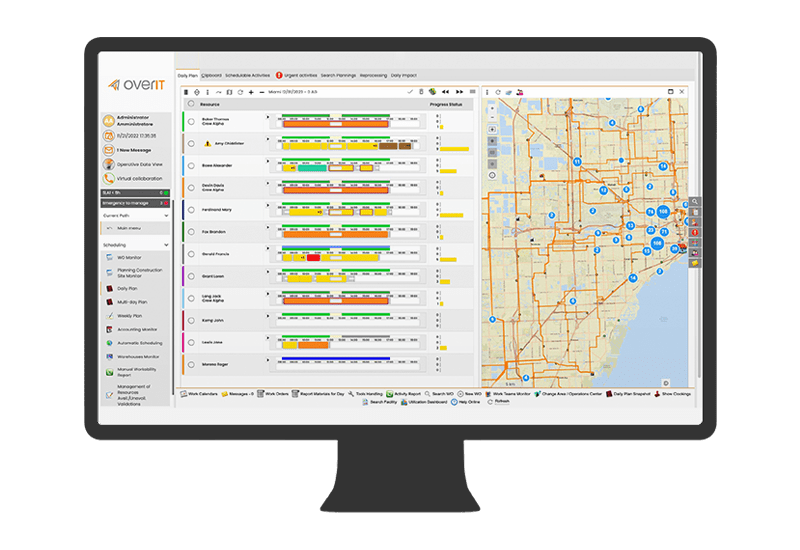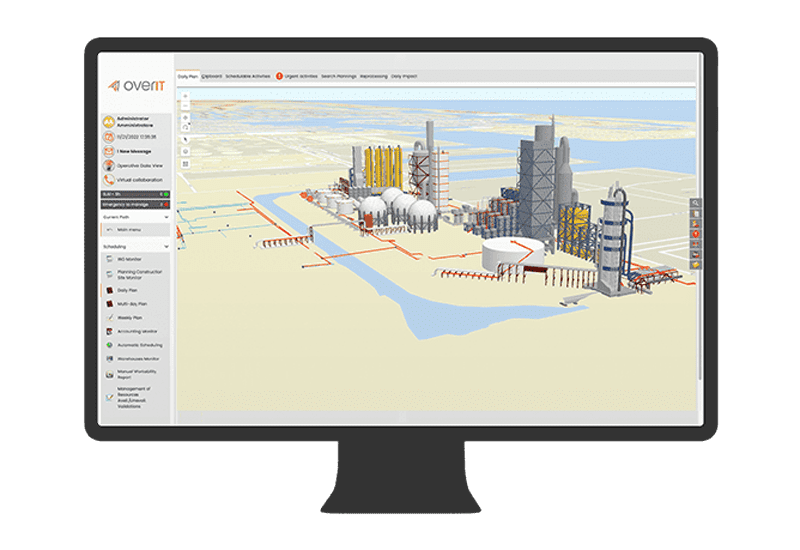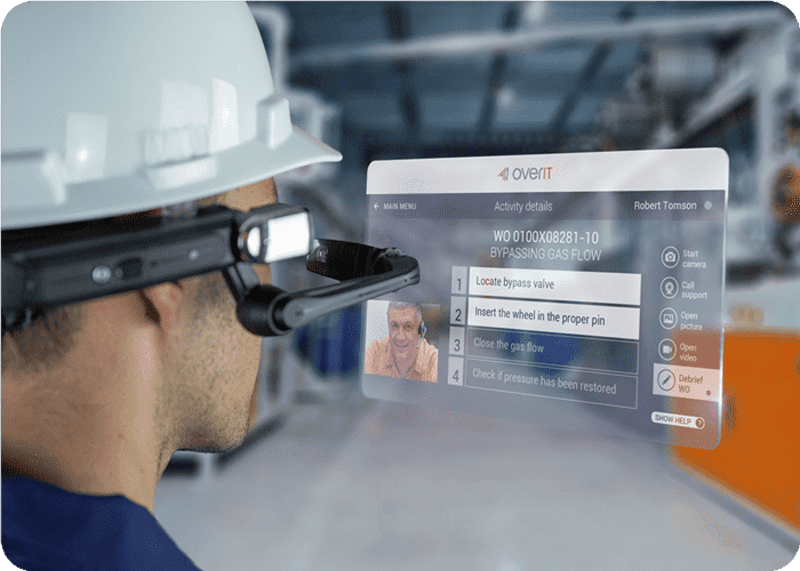Refineries need to function reliably and continuously to deliver critical petroleum products, but they are under considerable strain. According to a National Public Radio report published in June 2022, the United States had five fewer refineries at the beginning of 2022 than it had at the beginning of 2020, and refining capacity was approximately 1M bbl/day lower than pre-pandemic levels. The COVID-19 pandemic also impacted the workforce, with many workers migrating to other sectors less cyclical than the oil and gas industry.
The exodus of workers has created a serious situation. While refineries need to run at capacity to meet demand, they often are doing so without properly staffed and equipped crews. An increasing skills gap means that, in many cases, technicians with less training and experience are trying to carry out complex tasks.
The nature of refinery work means workers routinely interact with hazardous chemicals and the potentially dangerous equipment used for complex chemical processes, and those activities can result in a range of injuries, including explosions and fires, malfunctioning equipment, impure chemicals, and exposure to toxic environments.
In the face of these and other challenges, refineries are working at capacity to continue to meet the high demand for petroleum products, committing themselves to ensuring production continuity, providing for worker safety, preventing emergencies, and complying with regulations.

The Lay of the Land
Statistics from the U.S. Occupational Safety and Health Administration (OSHA) paint a picture of the seriousness of the situation. Data from 153 refineries across the nation show that 1,539 injuries and seven deaths were reported between August 2017 and March 2023. As sobering as these numbers are, they could actually underrepresent the number of injuries because contractor injuries are not always recorded in the same way as injuries to direct full-time employees.
As in other segments of the oil and gas industry, refineries are moving toward digitalization, but until that transition is complete, allowing repetitive and dangerous processes to be performed by machines, workers remain the backbone of refinery operations. Every day, they are required to perform tasks that put them in harm’s way, and that means the possibility of injury is a serious consideration.
The 2017 OSHA report, “Process Safety Management for Petroleum Refineries,” presents lessons learned from the petroleum refinery process safety management National Emphasis Program and identifies areas where the industry experienced the most citations for injuries. They include:
- Process safety information
- Process hazards analysis
- Operating procedures
- Mechanical integrity
- Management of change
Each of these areas relies on workers’ familiarity with critically important documents. Not surprisingly, lack of communication and the inability to access correct information are two of the largest contributing factors that lead to worker accidents, injuries and fatalities. The right processes and procedures have to be followed, but it often is difficult for workers to locate the appropriate documents in a format they can use. Even when access is not the issue, it is not unusual for equipment maintenance processes to require many steps, which not every worker has the requisite training to execute. These are critical considerations in routine operations but, in emergency situations, they can be catastrophic.

The Right Tools for the Job
Field Service Management (FSM) software is one of the tools refineries are using to improve oversight and management but, as with every solution that is integrated into operations, it is important that the FSM software selected for the facility has the necessary features to do the job.
The best FSM tools provide global oversight of operations along with practical, easy-to-use solutions for everyday activities, such as:
- Planning and optimizing job assignments
- Simplifying regular inspections and maintenance using digital instructions and augmented reality tools
- Providing technicians with historical job and asset data
- Complying with regulations, especially those governing worker safety
- Connecting site workers with remotely located expert human resources
- Collecting data that can be used for predictive analysis
At the top end of the product offering, FSM tools connect critical functions, optimizing crew scheduling, providing access to appropriate documents for maintenance and inspection, as well as processes and procedures that are aligned with regulatory requirements, and enabling contact between less-skilled workers and remotely located experts who can help with complex machinery or complicated, multi-step processes.
Additional features like leak detection to reduce risks to site personnel, 3D asset views that allow workers to “see” subsurface assets and the location of otherwise hidden meters and gauges, and GIS redlining, which enables workers to correct outdated drawings based on their observations, can drastically improve safety and productivity.

Putting FSM Solutions to Work
FSM implementation begins with applying high-level functions at the supervisory level. Managing people is one of the most critical functions of an FSM solution. For supervisors mapping out work schedules is a chronic challenge. A high-level FSM solution can forecast labor demand based on historic work volume and automatically assign and optimize work so the right workers with the right skills are located in the correct place, with the right tools to do the job. The best FSM tool is one that can predict workloads and tasks based on different scenarios and business inputs to simplify scheduling.
Once scheduling and workloads have been optimized, the second step is to provide workers with mobile devices that allow access to digital work instructions, augmented reality animations, safe stops and checks, as well as historical information and instructional documentation. Devices also enable direct communication with supervisors.

The next level integrates augmented reality; for example, wearable PPE like a hands-free headset that superimposes information on equipment in the worker’s field of view to help with tasks like locating a reset button on a machine or visualizing how oil flows through a separator.
The most advanced FSM platforms take management to a new level, supporting virtual reality (VR) components, which have a range of applications. For example, VR can be used for training exercises, allowing workers to experience hazardous emergency situations where they learn how to do things like execute emergency shutoff procedures under conditions that do not jeopardize their safety.
The next step on the horizon for FSM solutions is using AI to analyze historical readings and look at performance requirements to enable preventative steps as well as corrective measures.
Changing the Status Quo
A range of FSM tools is available, but all tools are not created equal. It is important to evaluate the capabilities of the FSM solution, its track record, and how complex it is to apply and scale. The good news is that solid, proven tools are available, and some refineries are already leveraging them to improve worker safety, streamline operations, and optimize production.
A technology leader in the FSM space, Devin Landes, senior manager, Solution Engineering and Sales, OverIT, is focused on customer engagement and solutions. Beginning her career at Oracle, she has concentrated on solution engineering, working with large, enterprise FSM companies and honing her understanding of people and processes in industries such as utilities, energy, manufacturing and telecommunications to facilitate field service-led digital transformation. Email Devin.Landes@OverIT.ai or call (310) 648-4326.
Oil and gas operations are commonly found in remote locations far from company headquarters. Now, it's possible to monitor pump operations, collate and analyze seismic data, and track employees around the world from almost anywhere. Whether employees are in the office or in the field, the internet and related applications enable a greater multidirectional flow of information – and control – than ever before.




